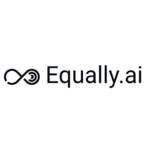An innovative solution to improving digital accessibility on healthcare websites is by integrating AI technology. Healthcare provider websites, for example, serve as not only a source of crucial information but also a vital tool to connect digitally with current and prospective patients.
As ChatGPT continues to make headlines, it is worth looking at ways it can be integrated into ongoing initiatives to improve patient access and patient experience.
What Does "Digital Accessibility" Really Mean?
In the healthcare industry, “digital accessibility” means making it easy for everyone to access healthcare information and services online. This includes making health-related websites and apps accessible to people with disabilities and low digital literacy and supporting assistive technologies like screen readers, voice recognition software, and alternative keyboards.
Improving accessibility in healthcare expands opportunities for those who have historically faced difficulty navigating the system. For example, nearly 1 in 4 people have a disability and 16% of working-age adults in the U.S. are not digitally literate.
The end goal of any digital accessibility initiative ensures anyone – including those populations referenced – can find information, schedule appointments, and access their medical records regardless of visual, motor, auditory, speech, or cognitive disabilities or digital literacy.
How to Leverage AI Technology
ChatGPT can generate descriptive alternative text descriptions for images on your website, and also be used to build a chatbot feature to assist patients looking for information on your website or app. This can be particularly helpful for people with cognitive or learning disabilities who may struggle with navigating complex websites, as AHIMA Foundation found in its 2022 patient-centered outcomes research.
At Equally AI, where I serve as CEO, we recently used Flowy, the world's first ChatGPT-powered web accessibility platform, to conduct an analysis of 30 highly-trafficked healthcare websites in the United States.
Each website was evaluated for ease of use, compatibility with assistive technology, and compliance with Web Content Accessibility Guidelines (WCAG) 2.1 Level AA success criteria – using ARIA, an automated accessibility audit tool developed by Equally AI.
The healthcare websites scoring the highest included drugs.com, nih.gov, zocdoc.com, cdc.gov, and medlineplus.gov; each of them shared the following accessibility features:
- Clear and concise language
- Logical structure
- Keyboard accessibility
- High color contrast
- Alternative text descriptions for images
- Skip navigation links
- Descriptive link text
- Accessible forms and error messages
Why Implement Company-Wide Digital Accessibility Training
In an effort to keep up with the evolution of digital communications and technology, the U.S. Depart of Justice Civil Rights Division issued official Guidance on Web Accessibility and the Americans with Disabilities Act in March 2022, and later that year, the U.S. Department of Health and Human Services Office of Civil Rights issued official Guidance on Nondiscrimination in Telehealth.
One of the most significant barriers that healthcare organizations face in achieving digital accessibility compliance is a company-wide lack of awareness and education.
To achieve and maintain digital accessibility long-term, healthcare organizations should provide digital accessibility training to their employees, regardless of their role in the organization, in the same way, they provide training and education on topics such as sexual harassment or diversity, equity, and inclusion.
This training should not only include the finer points of digital accessibility referred to above, but also an understanding of the unique needs and experiences of actual patients with disabilities and low digital literacy.
Only from understanding can we begin to have an informed conversation about the importance of the integration of AI tools to support improvements in patient access and patient experience.
About Equally AI
 Equally AI is a tech provider of web accessibility solutions led by the belief that accessibility should be a fundamental part of every web product. Equally AI’s solutions save healthcare organizational leaders time, energy, and money while empowering their websites to operate in better accessible ways for all users.
Equally AI is a tech provider of web accessibility solutions led by the belief that accessibility should be a fundamental part of every web product. Equally AI’s solutions save healthcare organizational leaders time, energy, and money while empowering their websites to operate in better accessible ways for all users.
